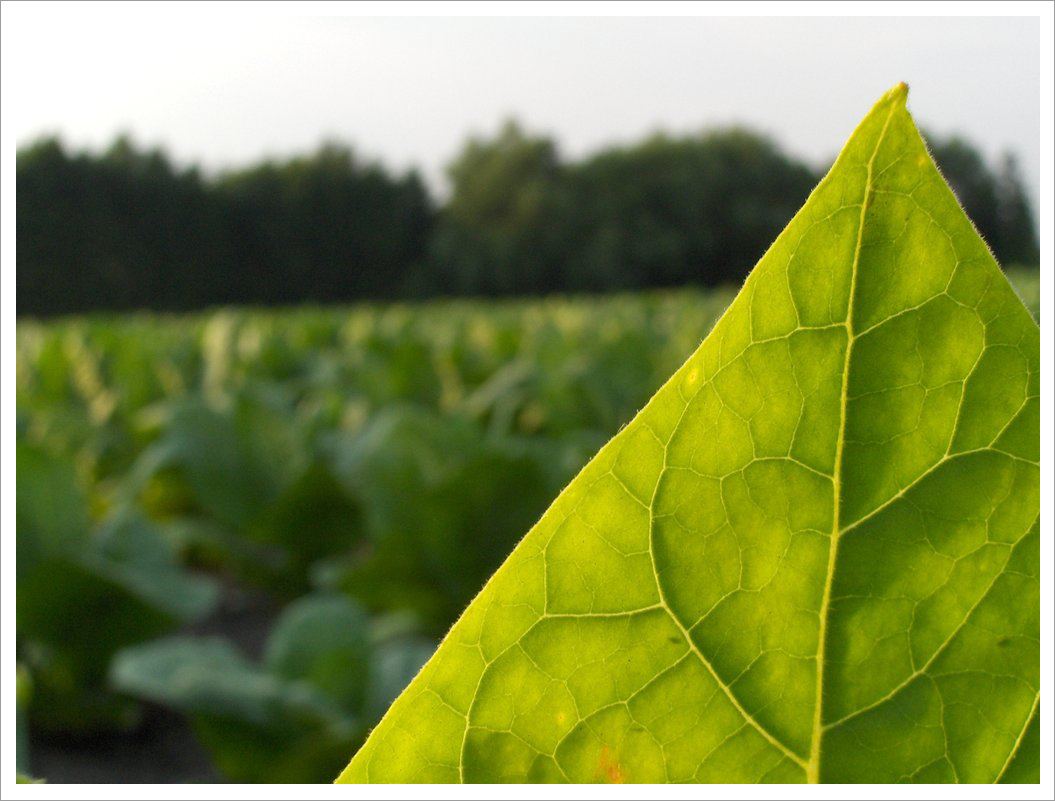About Tobacco
 The tobacco plant belongs to the nightshade family, just like the potato plant and the tomato plant. It is an annual, with a short tap root and 6-8 side roots that branch into a dense root system. The plant has a main stalk that does not branch until the very top. Depending on the species and growing conditions, the plant can reach heights ranging from 50 cm to 3 m.
The tobacco plant belongs to the nightshade family, just like the potato plant and the tomato plant. It is an annual, with a short tap root and 6-8 side roots that branch into a dense root system. The plant has a main stalk that does not branch until the very top. Depending on the species and growing conditions, the plant can reach heights ranging from 50 cm to 3 m.
The various tobacco species are divided into two main groups: Nicotiana Tabacum and the much smaller Nicotiana Rustica, which includes ornamental plants. Nicotiana Tabacum includes all the tobacco species of importance for the modern tobacco industry.
Different Forms of Tobacco
Tobacco leaves are processed in different ways before they are used to make cigarettes and other products. The type of tobacco leaf used and the method of curing or drying changes the taste of tobacco smoke and the nicotine content.
• Flue-cured or dried tobacco is heated to speed the curing process. The tobacco is called bright or Virginia tobacco
• Air-cured tobacco is called Burley or Maryland tobacco.
• Sun-cured tobacco is called Oriental tobacco.
• Tobacco stems and leaves can be mixed together and rolled into a sheet and then shredded. Sometimes tobacco is puffed or freeze-dried.
Cigarettes, cigars and smokeless tobacco products are made from blends of different kinds of tobacco. Cigarettes are made from a mixture of tobacco wrapped in a paper tube. They can be made by machines or rolled by hand. Many manufactured cigarettes have a filter.
Information on Nicotine, Tar and Carbon Monoxide
Nicotine
• Nicotine is the addictive drug in tobacco. When you smoke tobacco, nicotine goes into your bloodstream and reaches your brain within 8 to 10 seconds.
• Nicotine can be a deadly poison that causes vomiting, shaking, convulsions and death. A few drops of nicotine can kill you.
• People picking tobacco quickly absorb nicotine through their skin. This makes them dizzy and feel like throwing up—an illness called green tobacco sickness.
Tar
• Tar is a sticky black glob made up of thousands of chemicals.
• Tar builds up in the lungs and makes breathing harder.
Carbon Monoxide
• Carbon monoxide is a poisonous gas that forms when anything - including tobacco - is burned.
• When you inhale carbon monoxide, it takes the place of oxygen in the blood.
Per-cigarette tar, nicotine, and carbon monoxide yields are measured by standardized machined test methods. The most widely used test method is that of the International Organization for Standardization (the "ISO method"). Another is the more intensive method developed by Health Canada.
Many countries require cigarette manufacturers to print the per-cigarette yields of tar, nicotine, and CO on cigarette packs. Some countries, including all of the European Union countries, have also established ceilings--maximum limits--for tar, nicotine, and/or carbon monoxide yields. With the exception of a handful of countries such as the Netherlands, very few countries regulate tar, nicotine, and carbon monoxide yields in other smoked tobacco products such as roll-your-own tobacco.
No country has imposed ceilings or maximum smoke yields for smoke constituents other than tar, nicotine, or carbon monoxide.